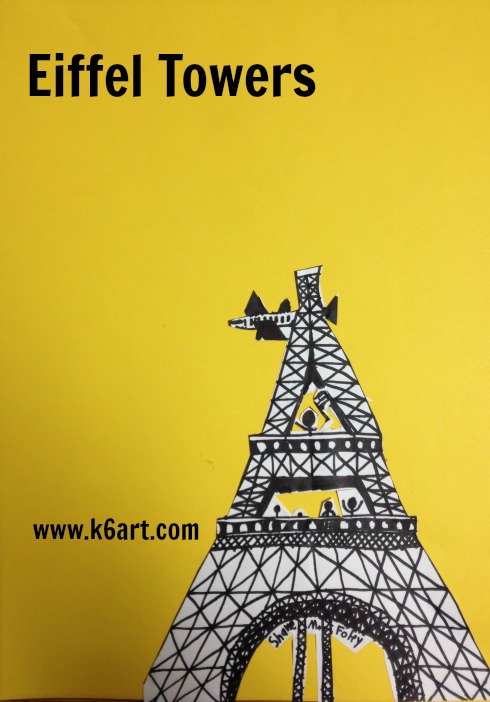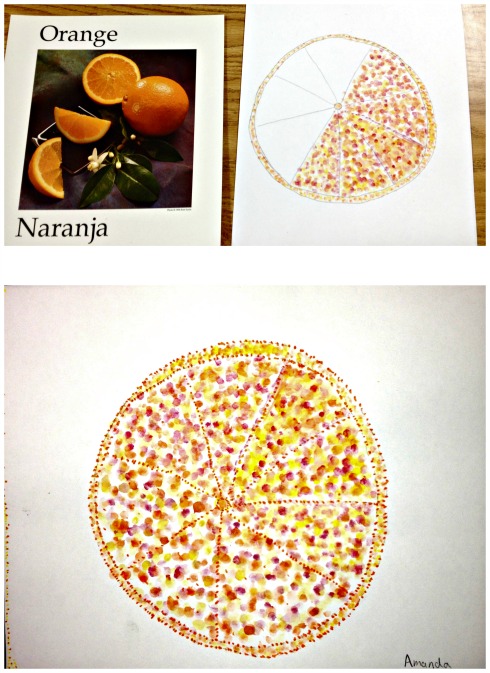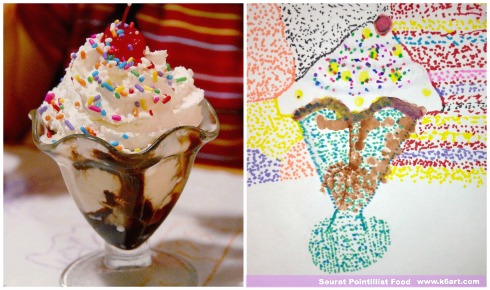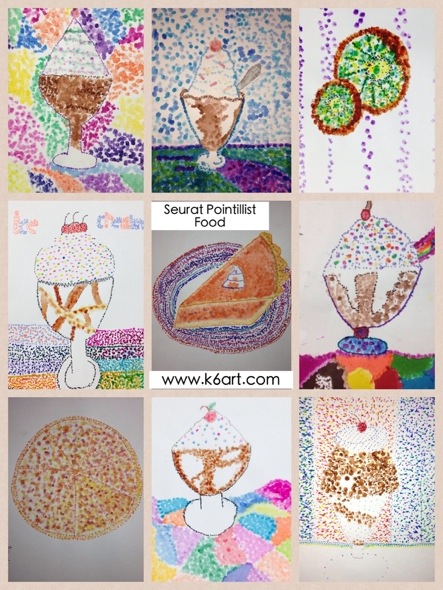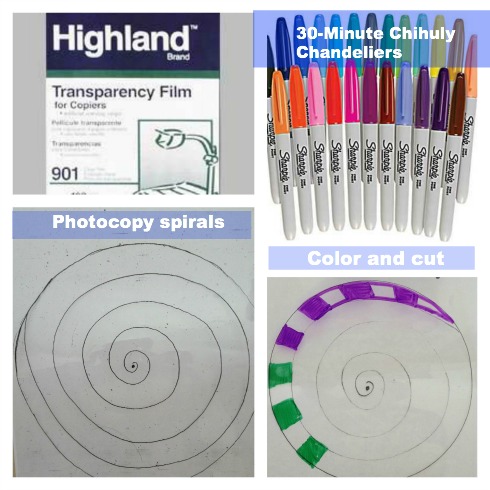Guess what? The Eiffel tower is not hard to draw. Our sixth graders drew the Eiffel tower, then created a Paris scene in the style of American artist Marz Jr.
The Art of Marz Jr.
We looked at the Marz Jr. website and noticed that many of his illustrations feature detailed black line drawings of famous architecture, such as the White House, the Brooklyn Bridge, and the New York Stock Exchange.
The focal point is often black line on white, contrasted against a simpler black line drawing on a brightly colored background.
Materials:
- white paper (we used copy paper)
- Sharpies
- construction paper, 12″x18″ – yellow, orange or light green
- scissors
- glue sticks
- reference photos of the Eiffel Tower and Paris
Day 1: Drawing the Eiffel Tower:
We began by looking at this close-up photo of the Eiffel Tower. I asked the students to look closely at the metal work, beginning at the bottom of the tower. The entire tower is made of metal ‘X’s!
They lightly folded copy paper vertically (‘hot dog’) to create a line of symmetry, then used Sharpie for the directed draw. We drew from the bottom up, starting with the ‘rainbow’ arch, to the first viewing platform, to the ‘legs’, to the second viewing platform, and then up to the top. X, X, X, X……..
Day 2: Create Paris Scene, Cut and Collage
Using iPads, students looked at Google images of Paris. They used Sharpie to draw simple background scenes on colored construction paper, then cut out their Eiffel Towers and glued them on with glue stick.
The project took two 40-minute classes. It was a very successful project with no prep and minimal clean up.
The project was inspired by Marz Jr. projects in this post on the shine brite zamorano blog and this post at Deep Space Sparkle.
If you are really into Paris, check out my series of Paris-themed art (and cooking!) projects from art camp last summer. And definitely check out Cassie Stephens’ Paris unit on her elementary art blog.
Enjoy!

